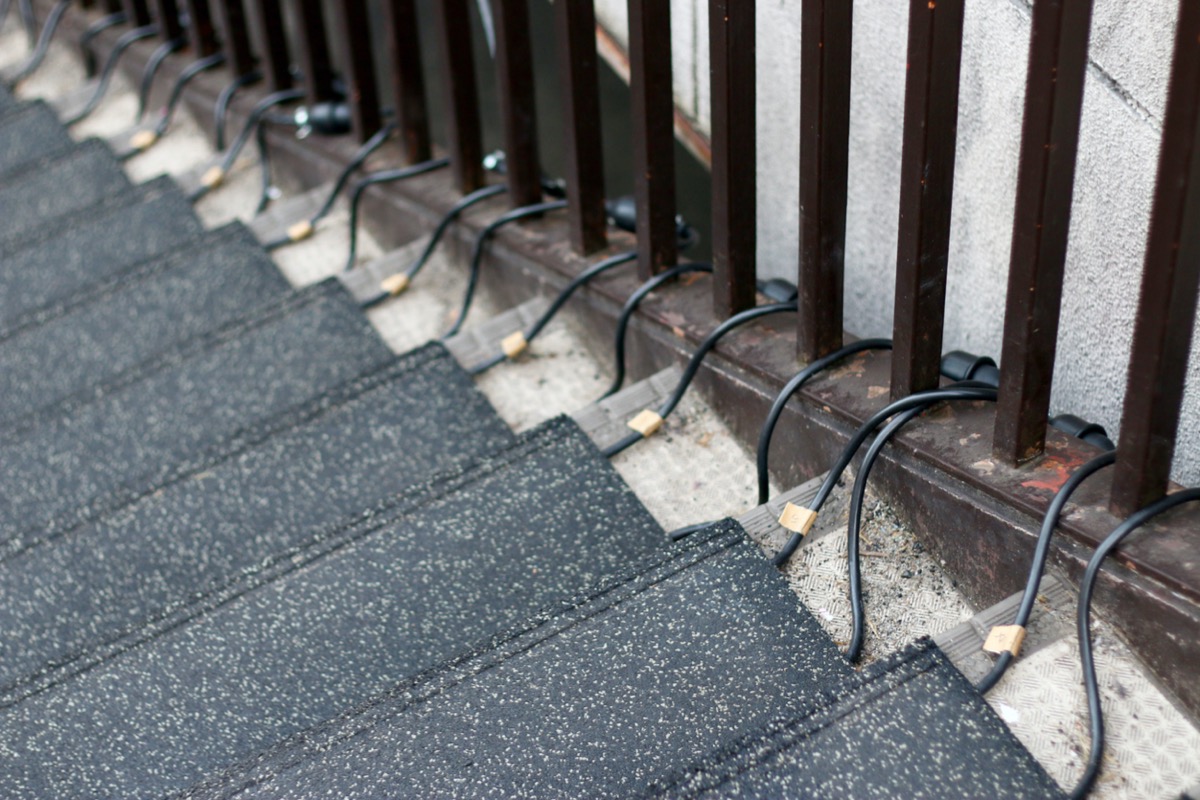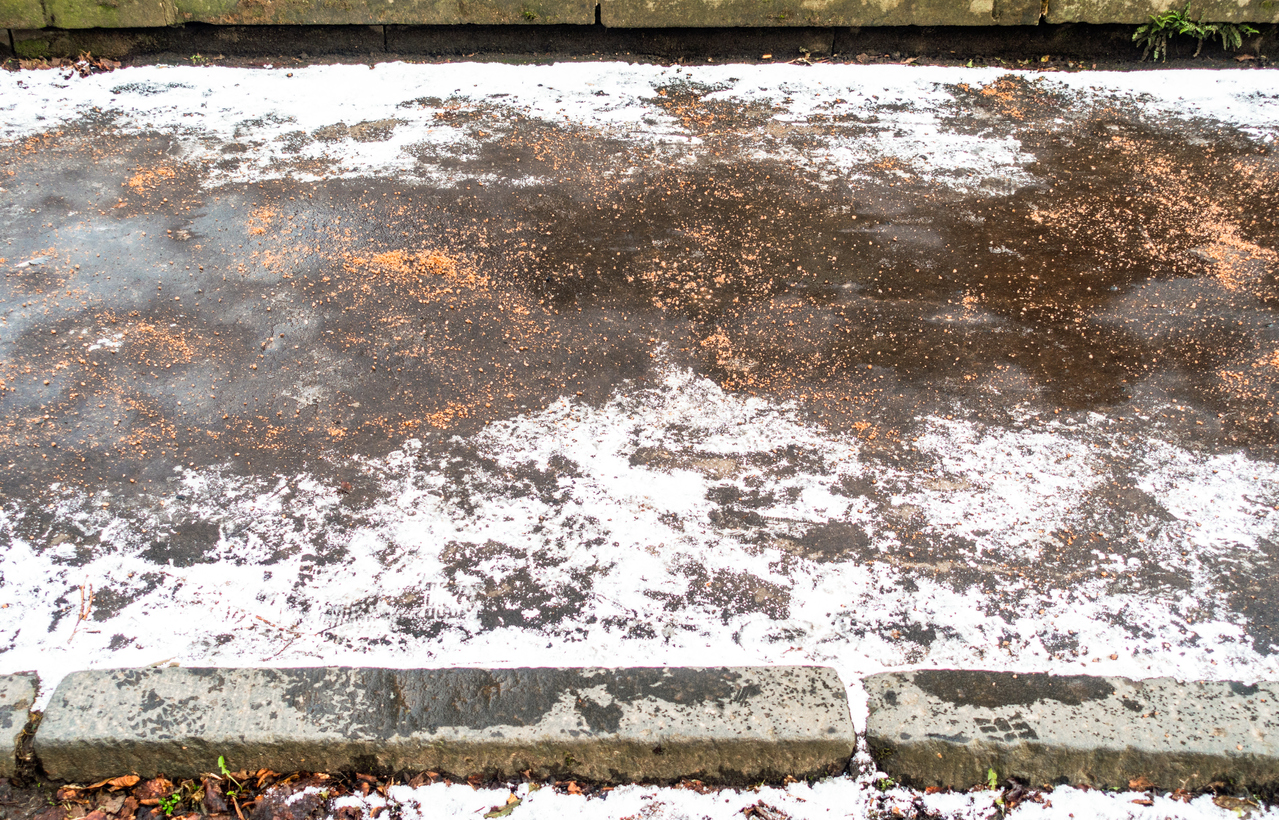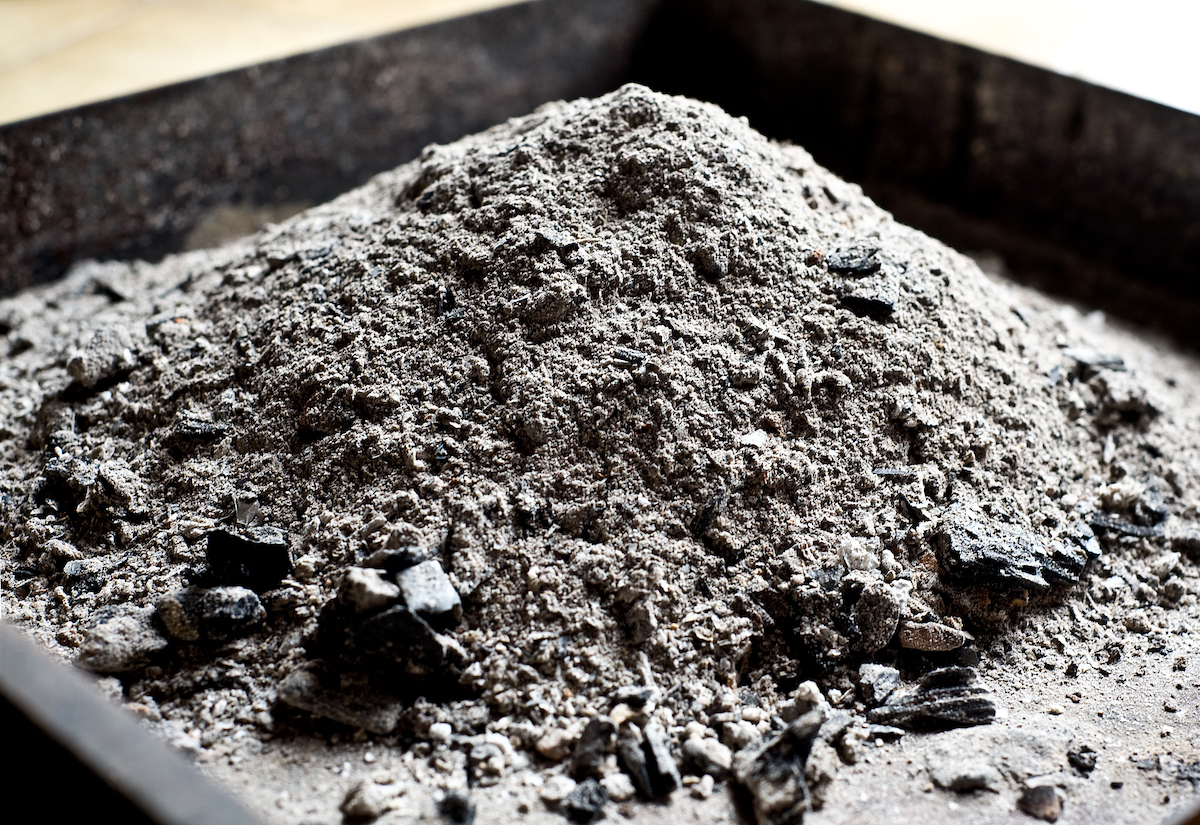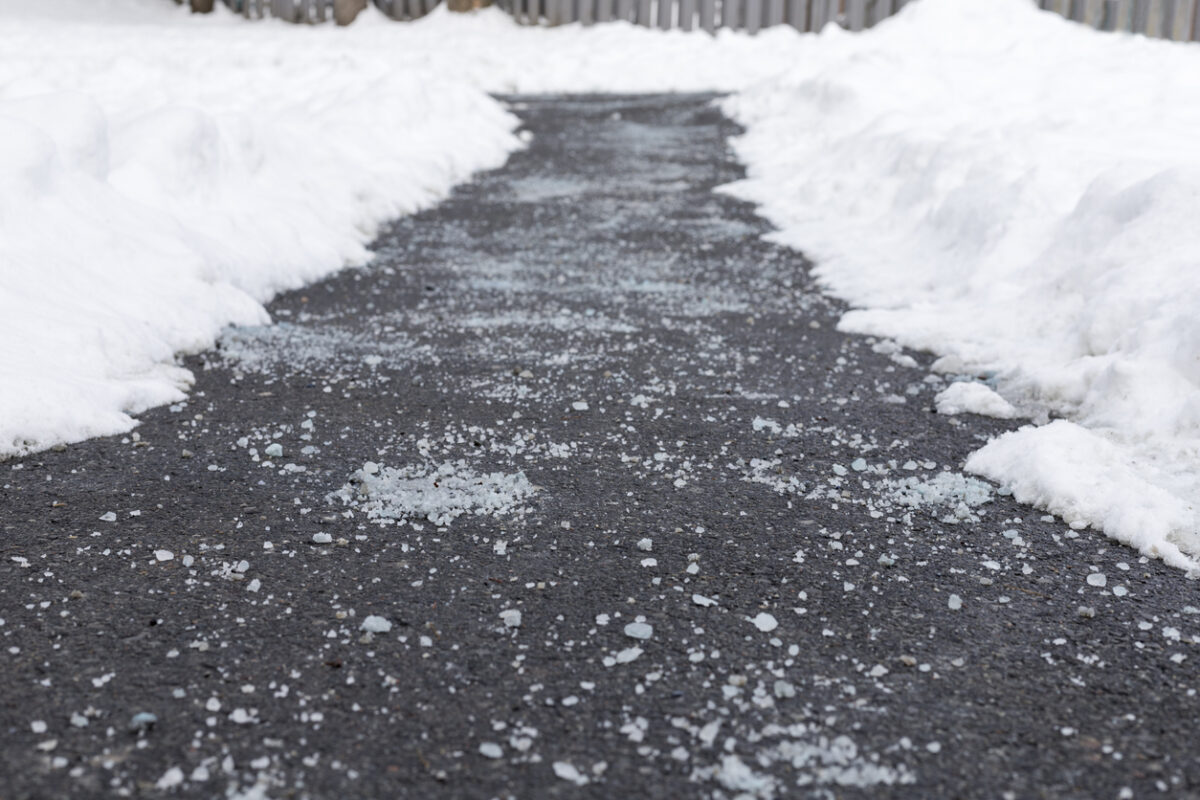

We may earn revenue from the products available on this page and participate in affiliate programs. Learn More ›
When strong winter storms hit, many people stay safe and warm indoors until the poor weather has cleared up. If you need to go out, however, and you don’t have any rock salt for melting the ice that’s sure to form on your driveway and walkway, then your strategy might be to try to clear the snow at multiple points throughout the storm to prevent a layer of ice from forming. This is one effective way to keep your property’s high-traffic areas ice-free, but it’s time-consuming, physically demanding, and exposes you to severe winter weather (and the risk of slipping and falling on ice).
Instead, consider using an alternative method to ensure your porch, driveway, and walkway remain clear of ice even when stores run out of rock salt. Even when rock salt is readily available, it’s still preferable to use a different method for melting ice. This is because rock salt damages asphalt, concrete, grass, and other vegetation—not to mention the fact that it dries out pets’ paws, is not particularly safe to use around children, and can corrode parts of your vehicle. To help protect your home, pets, kids, and the environment, seek out one of these other means for melting ice on your outdoor surfaces.
1. Snow Melting Mats

One of the more passive methods for dealing with ice outdoors is to use snow melting mats. These innovative devices effectively eliminate the need for rock salt or even shoveling, in some cases. They can be laid along a walking path or porch and plugged in, at which point heat generated from the mats will melt any ice and snow on top of them. The initial cost of buying and installing a snow melting mat system is much higher than purchasing a bag of rock salt, especially if you are installing heat mats on an entire driveway, but it may be worth the cost if you never want to worry about shoveling again.
2. Fertilizer
Finding an alternative to rock salt isn’t just about effectiveness. Sometimes the best solution is a convenient one, such as a product you may already have in your garage or shed. Fertilizer doesn’t work as quickly as rock salt, but select one with a high percentage of nitrogen—the first of the three numbers typically listed on fertilizer packaging. Fertilizer ingredients such as ammonium sulfate, potassium chloride, or urea are high in nitrogen, and effectively melt ice. Like rock salt, the molecules in these chemicals lower the melting point of ice, but they do so without damaging your pavement and yard.
3. Coffee Grounds

Coffee grounds are often thrown away or composted after making coffee, but this organic debris is a great option for melting ice on your driveway and porch. Coffee grounds contain nitrogen, which works to lower the melting point of ice. Additionally, the dark color of coffee grounds absorbs sunlight better than white snow or clear ice, marginally helping to increase the speed at which the ice melts.
4. Rubbing Alcohol
Isopropyl alcohol isn’t only useful for cleaning, as it can also be poured on ice to help clear a driveway or path. However, simply dumping out an entire bottle of rubbing alcohol would be expensive and inefficient. To clear a sizable area, combine a 16-ounce bottle of isopropyl alcohol with 1 teaspoon of concentrated dish soap and 4 gallons of hot water for a more cost-effective homemade ice melt solution. Just be sure to shovel away any excess water after pouring, as it can refreeze and form new ice if left standing.
5. Sugar Beet Juice
A surprising substance with ice-melting capabilities is sugar beet juice. The chemical makeup of beet juice, which you can find online and in stores in liquid or powdered form, lowers the melting point of ice and snow in a manner similar to rock salt. Not only is this unconventional option effective for melting ice, but it’s also safe for concrete, asphalt, plants, cars, and pets. However, beware that beet juice’s reddish purple color can potentially stain concrete. To avoid this effect, clean up the beet juice as soon as the ice melts, if possible.
6. Vinegar
The acetic acid in vinegar is a chemical compound that lowers ice’s melting point, but it doesn’t melt ice quite as well as rock salt or some of the above alternatives. Like isopropyl alcohol, vinegar can technically be used on its own to melt ice, but it provides better results in a mixture of equal parts vinegar and hot water. This solution can rapidly melt solid sheets of ice, at which point they can be broken up with shoveling. As with alcohol, take care to clear the resulting water from your driveway, walkway, or porch to prevent it from refreezing.
7. Wood Ash

In a pinch, ash from your fireplace can be used as an ice melt, as it contains potassium, which will slowly melt ice. Wood ash has an additional benefit of adding traction to the slick ice. However, ash is also quite messy, and people who value clean floors may not be happy with ash being tracked into their homes.
8. Weed Torch
A weed torch is a propane-fueled device that is used to kill weeds by burning them up. If you’re really desperate to clear a path, it could also be used to melt away ice on concrete walkways. It’s unlikely to harm your concrete, but it’s best to try this method on a small patch of concrete before going all in. Of course, we recommend all the usual precautions when wielding fire.
9. Heated Driveway
For the ultimate convenience, you can invest in a heated driveway. A system of electric heating elements is installed below the surface of the driveway or walkway; when activated, the radiant heat melts the snow and ice away. Installing a heated driveway can cost from $10 to $25 per square foot, and adds a considerable amount to your monthly utility bill—as much as $120-$1,000, depending on a number of variables.
Another method of heating driveways uses a hydronic system, where a solution of hot water and antifreeze circulates through plastic piping installed beneath the driveway’s surface. The cost to install a hydronic system is typically more than the expense of installing an electric system.
When a Chloride Compound Is Your Only Option

OK, this last option is commercial ice melt. In the end, it could be that a traditional “ice melt” product may be your best (or only) option for disappearing the snow on your hardscaping. These products almost always contain chloride compounds. Note that all chlorides can harm waterways, are corrosive, and can harm lawns and other plants if they’re applied in large quantities. Some of them, however, do a little less damage than others.
- Calcium chloride is the most widely used non-sodium ice melt product. It melts ice at temperatures as low as -25° Fahrenheit.
- Magnesium chloride is often touted as being safer for pets. The ASPCA, however, says that magnesium chloride can cause stomach upset. It is effective to 0° Fahrenheit.
- Sodium chloride is rock salt, and is often used because it’s more affordable than other chlorides. It is effective to +20°Fahrenheit.
- Potassium chloride was once occasionally used as an ice melt, but it works more slowly than calcium chloride, rock salt and magnesium chloride. It is effective to +25° Fahrenheit.
If you want your ice melted as quickly as rock salt will do the job but you are are willing to switch to a more environmentally friendly (and more expensive) option, then calcium chloride is a good choice. It works best when used in temperatures between 0 and 30 degrees Fahrenheit, and it’s easy to find in many home improvement stores. Potassium chloride and magnesium chloride can also be used to melt ice. In fact, magnesium chloride is an even more ecologically safe option than calcium chloride, and it works at temperatures as low as -13 degrees Fahrenheit.
If you’re in a position to choose between these compounds (and we get it—in an emergency, you may not have a choice), we recommend that you weigh the pros and cons of each and make the best selection for your situation. Your needs will likely depend on whether you’re parking a car on the driveway you’re salting, or if you have children or pets who might come in contact with the ice melt.
